Anna Maria Mandalari
Imperial College London
Intelligent Detection of Non-Essential IoT Traffic on the Home Gateway
Apr 22, 2025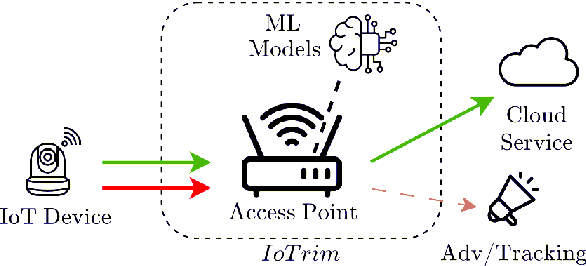

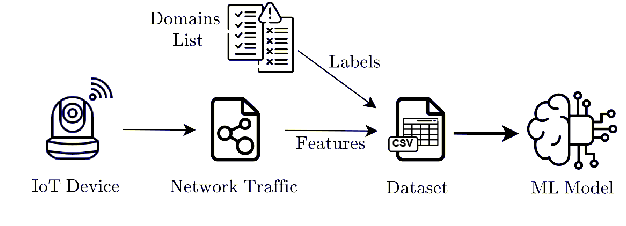
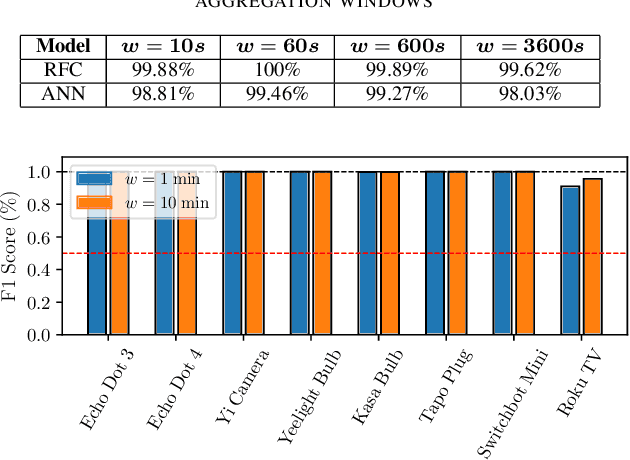
Abstract:The rapid expansion of Internet of Things (IoT) devices, particularly in smart home environments, has introduced considerable security and privacy concerns due to their persistent connectivity and interaction with cloud services. Despite advancements in IoT security, effective privacy measures remain uncovered, with existing solutions often relying on cloud-based threat detection that exposes sensitive data or outdated allow-lists that inadequately restrict non-essential network traffic. This work presents ML-IoTrim, a system for detecting and mitigating non-essential IoT traffic (i.e., not influencing the device operations) by analyzing network behavior at the edge, leveraging Machine Learning to classify network destinations. Our approach includes building a labeled dataset based on IoT device behavior and employing a feature-extraction pipeline to enable a binary classification of essential vs. non-essential network destinations. We test our framework in a consumer smart home setup with IoT devices from five categories, demonstrating that the model can accurately identify and block non-essential traffic, including previously unseen destinations, without relying on traditional allow-lists. We implement our solution on a home access point, showing the framework has strong potential for scalable deployment, supporting near-real-time traffic classification in large-scale IoT environments with hundreds of devices. This research advances privacy-aware traffic control in smart homes, paving the way for future developments in IoT device privacy.
SunBlock: Cloudless Protection for IoT Systems
Jan 25, 2024


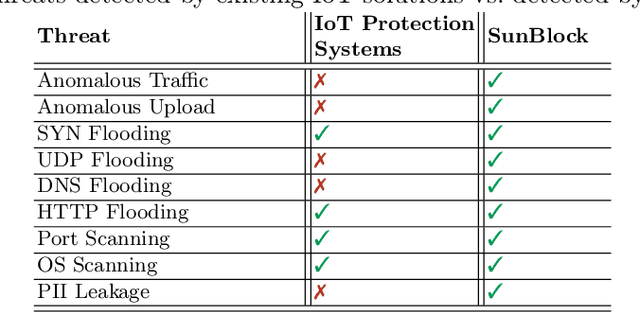
Abstract:With an increasing number of Internet of Things (IoT) devices present in homes, there is a rise in the number of potential information leakage channels and their associated security threats and privacy risks. Despite a long history of attacks on IoT devices in unprotected home networks, the problem of accurate, rapid detection and prevention of such attacks remains open. Many existing IoT protection solutions are cloud-based, sometimes ineffective, and might share consumer data with unknown third parties. This paper investigates the potential for effective IoT threat detection locally, on a home router, using AI tools combined with classic rule-based traffic-filtering algorithms. Our results show that with a slight rise of router hardware resources caused by machine learning and traffic filtering logic, a typical home router instrumented with our solution is able to effectively detect risks and protect a typical home IoT network, equaling or outperforming existing popular solutions, without any effects on benign IoT functionality, and without relying on cloud services and third parties.
Rapid IoT Device Identification at the Edge
Oct 26, 2021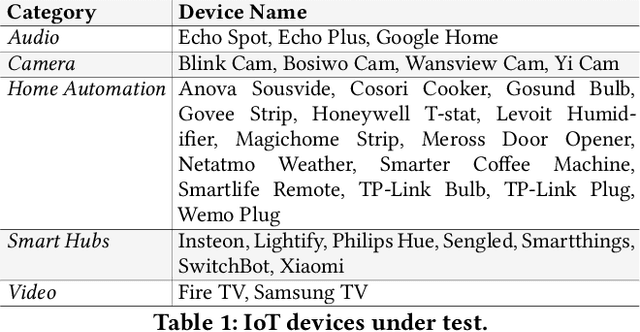
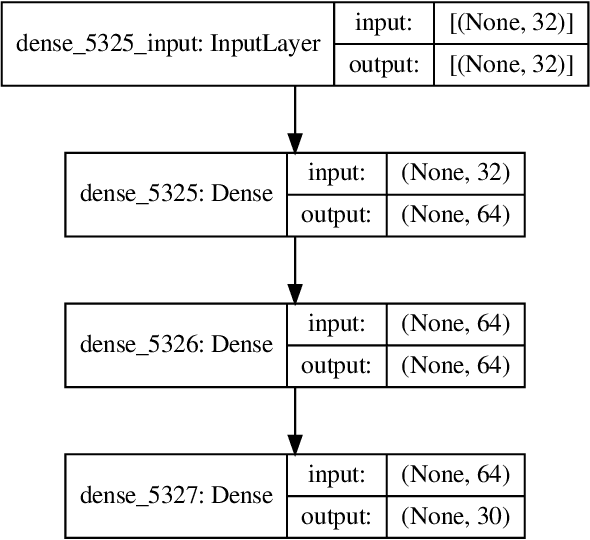

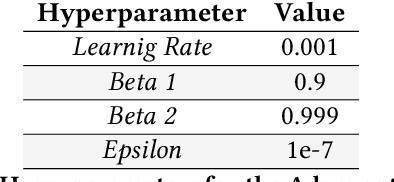
Abstract:Consumer Internet of Things (IoT) devices are increasingly common in everyday homes, from smart speakers to security cameras. Along with their benefits come potential privacy and security threats. To limit these threats we must implement solutions to filter IoT traffic at the edge. To this end the identification of the IoT device is the first natural step. In this paper we demonstrate a novel method of rapid IoT device identification that uses neural networks trained on device DNS traffic that can be captured from a DNS server on the local network. The method identifies devices by fitting a model to the first seconds of DNS second-level-domain traffic following their first connection. Since security and privacy threat detection often operate at a device specific level, rapid identification allows these strategies to be implemented immediately. Through a total of 51,000 rigorous automated experiments, we classify 30 consumer IoT devices from 27 different manufacturers with 82% and 93% accuracy for product type and device manufacturers respectively.
Revisiting IoT Device Identification
Jul 16, 2021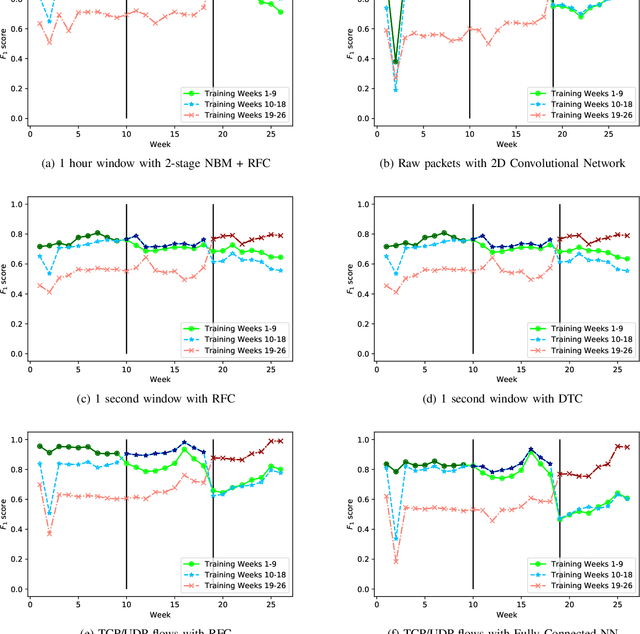
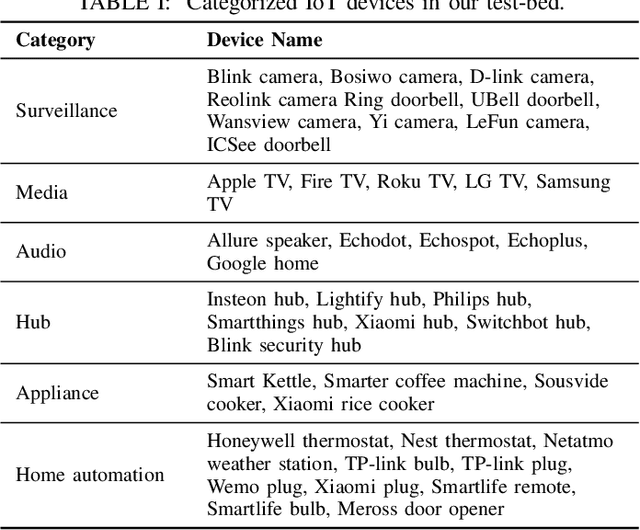
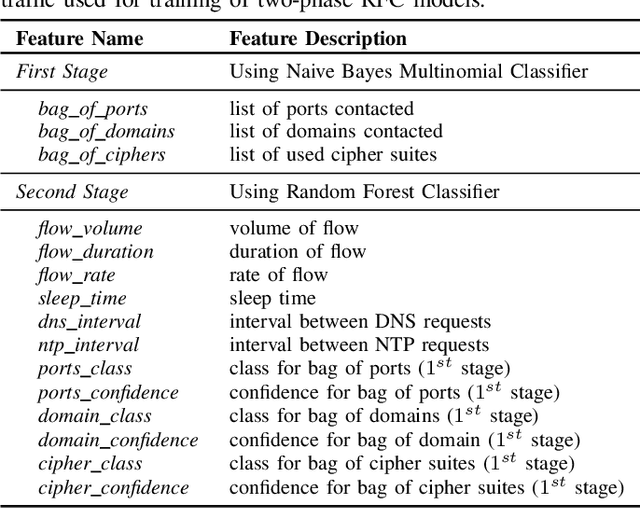

Abstract:Internet-of-Things (IoT) devices are known to be the source of many security problems, and as such, they would greatly benefit from automated management. This requires robustly identifying devices so that appropriate network security policies can be applied. We address this challenge by exploring how to accurately identify IoT devices based on their network behavior, while leveraging approaches previously proposed by other researchers. We compare the accuracy of four different previously proposed machine learning models (tree-based and neural network-based) for identifying IoT devices. We use packet trace data collected over a period of six months from a large IoT test-bed. We show that, while all models achieve high accuracy when evaluated on the same dataset as they were trained on, their accuracy degrades over time, when evaluated on data collected outside the training set. We show that on average the models' accuracy degrades after a couple of weeks by up to 40 percentage points (on average between 12 and 21 percentage points). We argue that, in order to keep the models' accuracy at a high level, these need to be continuously updated.
The Case for Retraining of ML Models for IoT Device Identification at the Edge
Nov 17, 2020
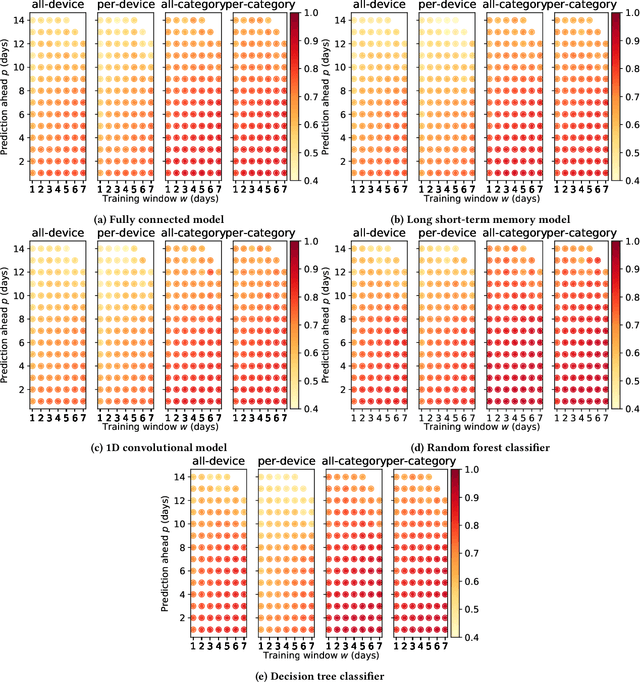
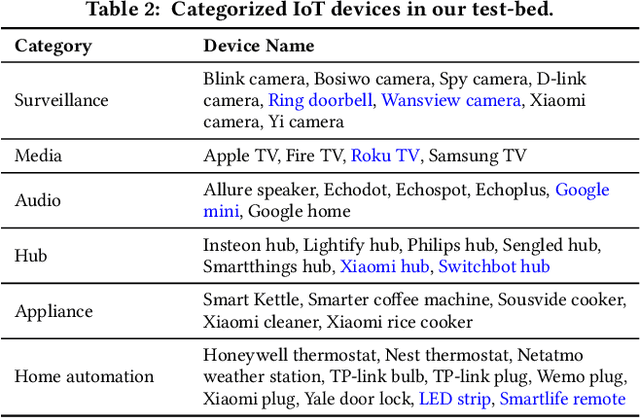
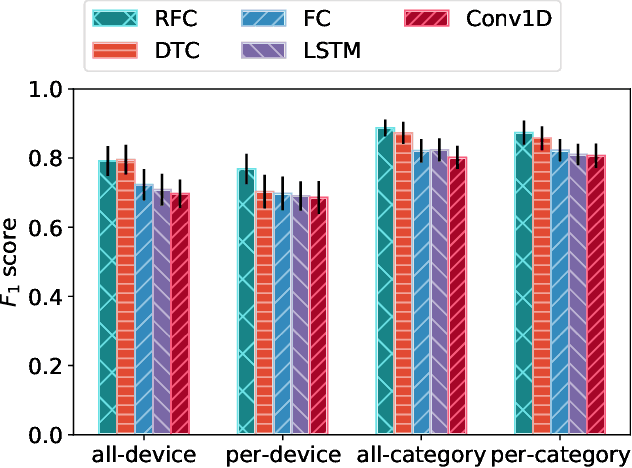
Abstract:Internet-of-Things (IoT) devices are known to be the source of many security problems, and as such they would greatly benefit from automated management. This requires robustly identifying devices so that appropriate network security policies can be applied. We address this challenge by exploring how to accurately identify IoT devices based on their network behavior, using resources available at the edge of the network. In this paper, we compare the accuracy of five different machine learning models (tree-based and neural network-based) for identifying IoT devices by using packet trace data from a large IoT test-bed, showing that all models need to be updated over time to avoid significant degradation in accuracy. In order to effectively update the models, we find that it is necessary to use data gathered from the deployment environment, e.g., the household. We therefore evaluate our approach using hardware resources and data sources representative of those that would be available at the edge of the network, such as in an IoT deployment. We show that updating neural network-based models at the edge is feasible, as they require low computational and memory resources and their structure is amenable to being updated. Our results show that it is possible to achieve device identification and categorization with over 80% and 90% accuracy respectively at the edge.
 Add to Chrome
Add to Chrome Add to Firefox
Add to Firefox Add to Edge
Add to Edge